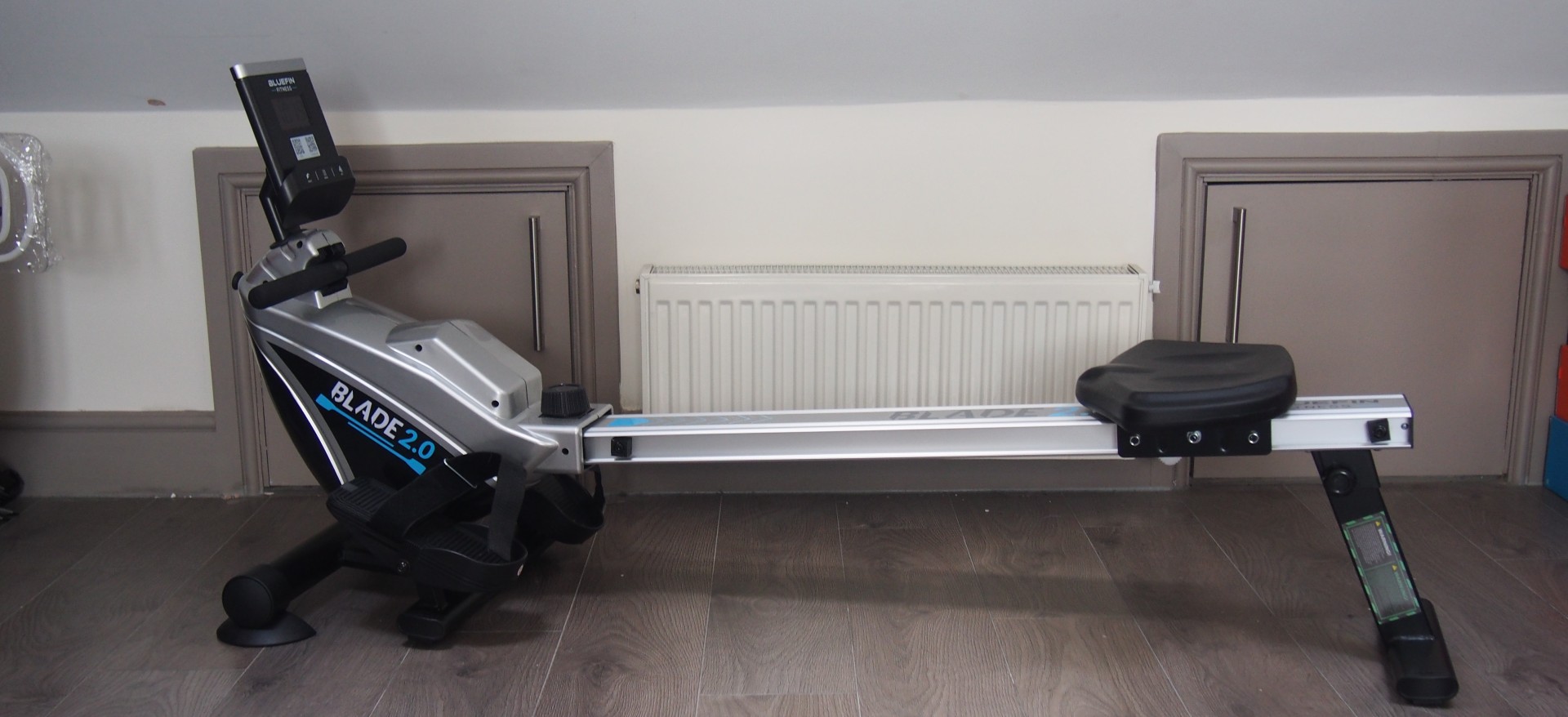Our Verdict
The Bluefin Fitness Blade 2.0 is a rowing machine that’s compact and foldable, and has the ability to connect to Bluefin’s fitness app to analyse your rowing time. The range of resistance levels and the somewhat cramped rowing experience make it better suited to smaller-framed exercisers who are indoor rowing beginners.
For
- Small and easy to manoeuvre
- Folds up for easier storage
- Works with companion workout tracking app
- Easy to assemble
Against
- Limited range of resistance levels
- Design feels cramped
- Pedals and seat feel low-quality
- Handle is small
You can trust Coach
Rowing machines can be expensive, but if you aren’t prepared to or simply can’t shell out big bucks for the industry-standard Concept2 RowErg (the best rowing machine in Coach’s opinion) or a connected option such as the Hydrow, there are cheaper alternatives like the Bluefin Fitness Blade 2.0. While it doesn’t offer follow-along workouts, you can connect the rower to your phone to upgrade the screen, and the machine itself folds up for easier storage.
Bluefin Fitness Blade Air Review: Price & Availability
The Bluefin Fitness Blade 2.0 is priced at $399/£359, but is often available at a reduced price from the Bluefin Fitness website and third-party retailers. That puts it in the same price realm as rowers such as the JTX Freedom Air, which also uses magnetic resistance and offers connected features like the ability to pair it with heart rate monitors. It’s also cheaper than the DKN H2Oar water rower, which uses water-based resistance, can be stored upright and can be connected to fitness apps as well.
The Set-Up
I’m happy to say, having dealt with a lot of big boxes and heavy lifting lately, that the Blade 2.0 is a much smaller rower that’s easier to get out of the box and put together.
Setting it up took about an hour; there’s a clear set of instructions to follow and all the tools came in the box. You’re basically getting the main frame, pedals and feet in place. It’s small and light enough for one person to assemble, and the trickiest part involves getting the rail connected to the frame.
Once built, I was surprised at how small it was. It doesn’t dominate a room in the same way that other rowers I’ve tested do. You can easily lift the rail to store it upright and there are pads on the stabilisers, so it’s not going to scratch or scuff a hard floor.
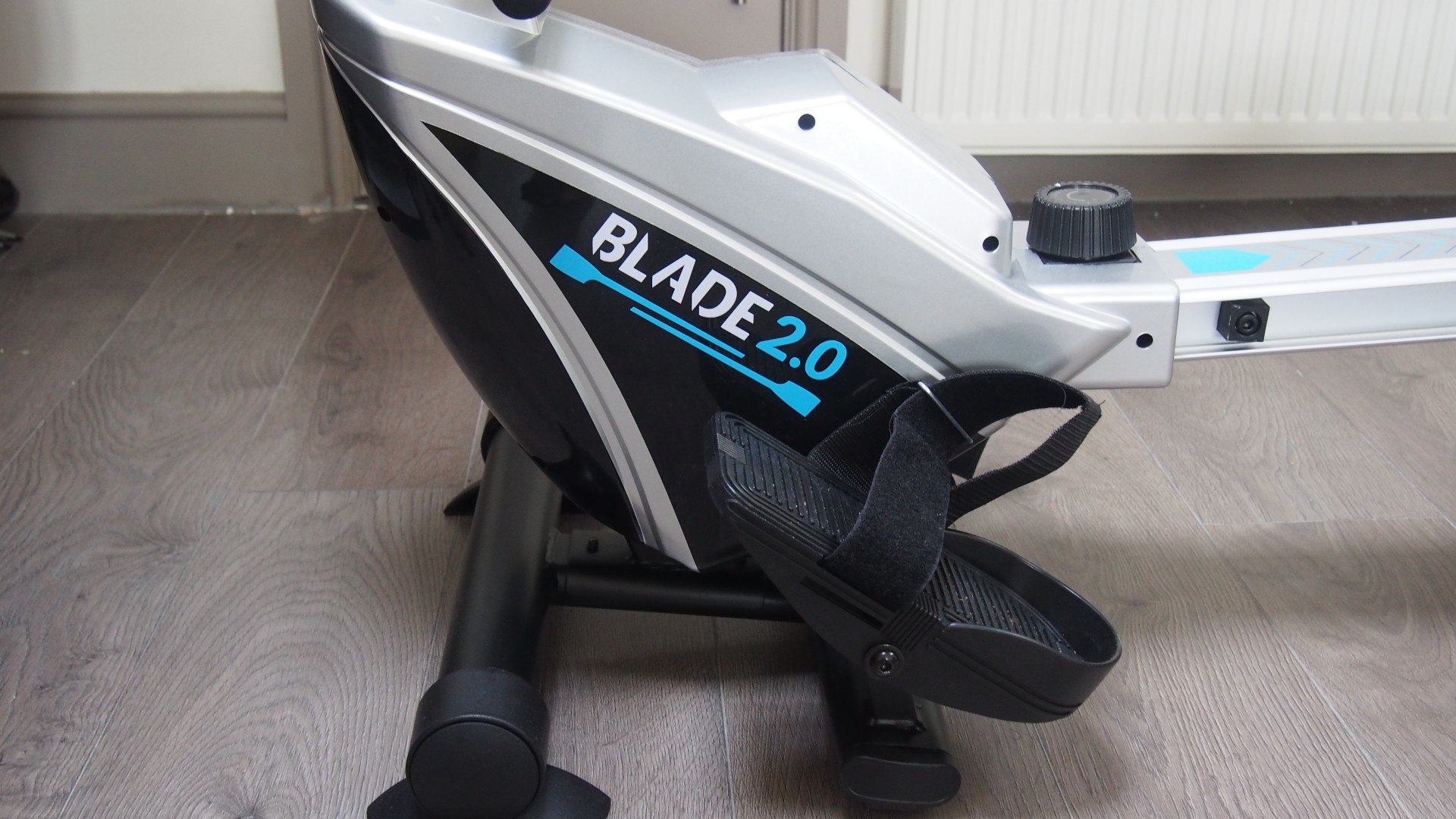
It’s significantly lighter than most rowers I’ve tested at around this price, which makes it easier to pull it out when you need to get to work and slide it away when you’re done.
It’s not the sleekest-looking rower I’ve had in my flat. Yes, it’s more space-friendly, but there’s a lot of plastic here and not a lot of character. That’s perhaps not all that surprising given the price, but if you’re hoping for a showpiece of your home gym, you’ll be left disappointed.
The Experience
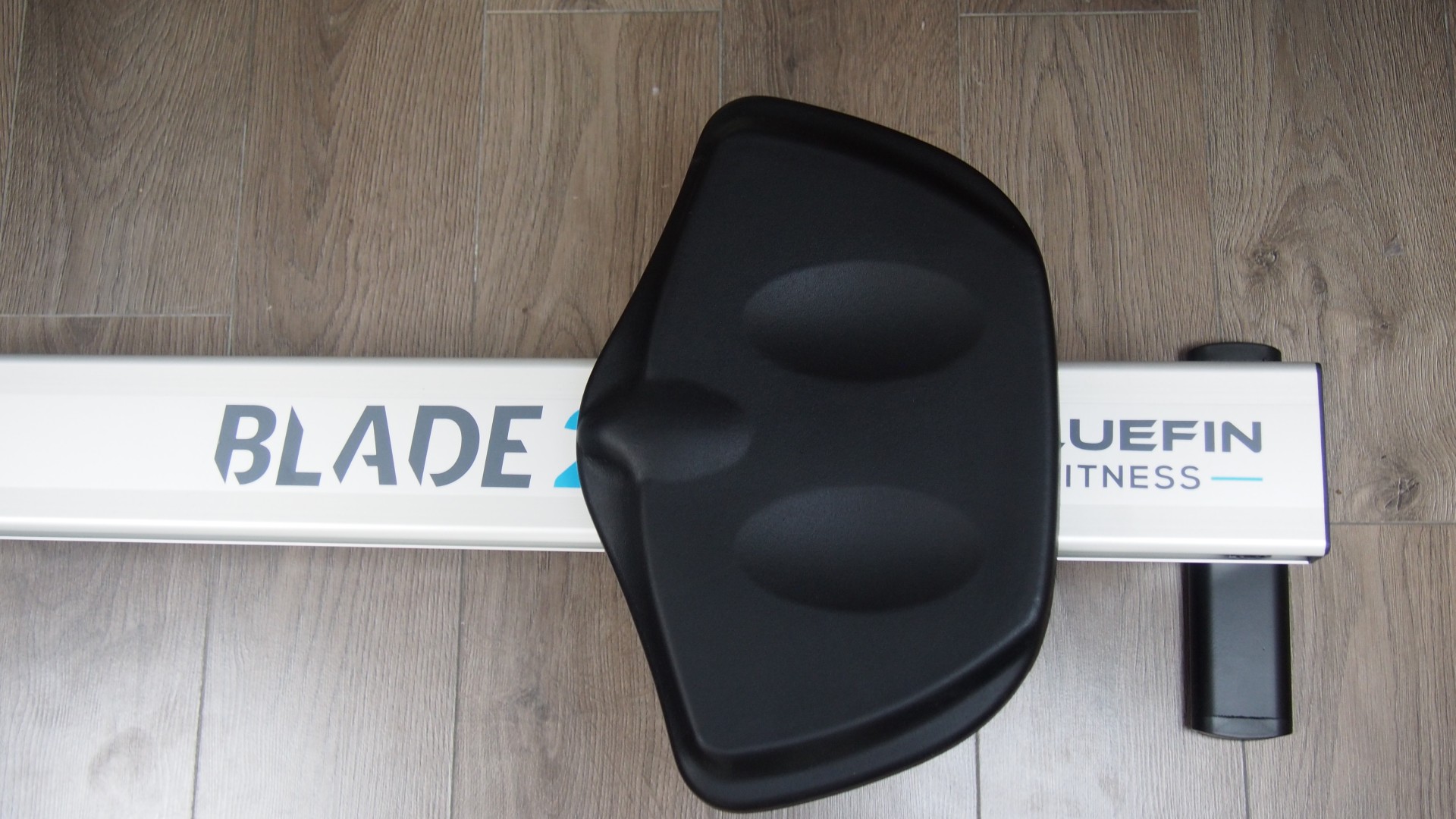
The first thing that strikes you when you’re in the seat is that it feels small. I’m not exactly the biggest person, but I think someone with a larger frame may feel this rower isn’t the most accommodating. That small design extends to elements like the handle, which felt like it could do with wider arms and wasn’t the most comfortable to grip.
Once you’re ready to get rowing, you have a couple of display options. The integrated one is a basic LCD affair, which can scroll through speed, time, distance, strokes per minute and calories burned. In front of that display is a shelf to prop up a tablet or phone.
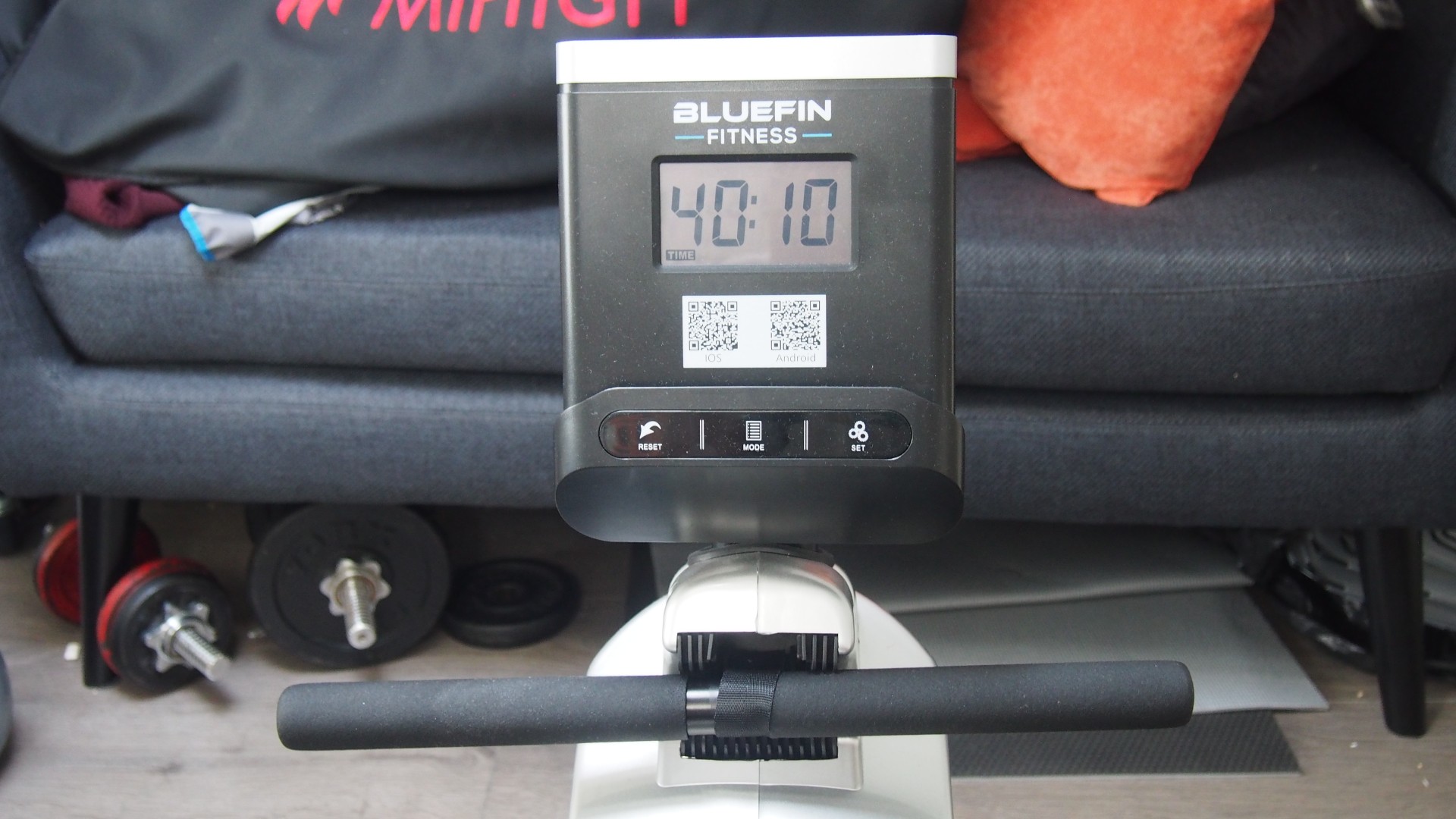
It’s compatible with a very basic but free companion app called Fitness Data where you can simply track your stats in real time with a gaming section listed as “coming soon”. Connecting to the app over Bluetooth was fine, but it’s bare-bones stuff and doesn’t offer you anything in terms of structured workouts or classes.
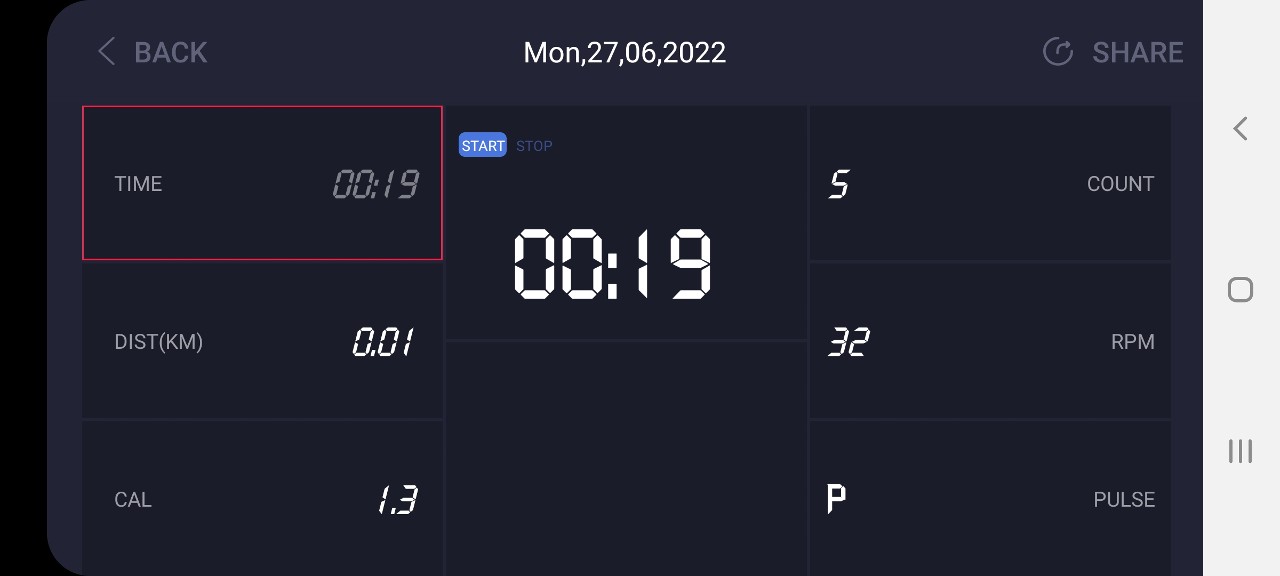
The rowing experience is underwhelming. With such a small range of resistance levels (eight), the highest setting doesn’t provide enough resistance for my tastes. Bluefin uses magnetic resistance, which is relatively quiet in operation but in this instance doesn’t provide the smoothest or slickest rowing experience. Plus, the chain needed to be longer.
If you’re starting out on a rowing machine and don’t want to go heavy on resistance, then you may get on with this rower, but as you progress you may outgrow this machine.
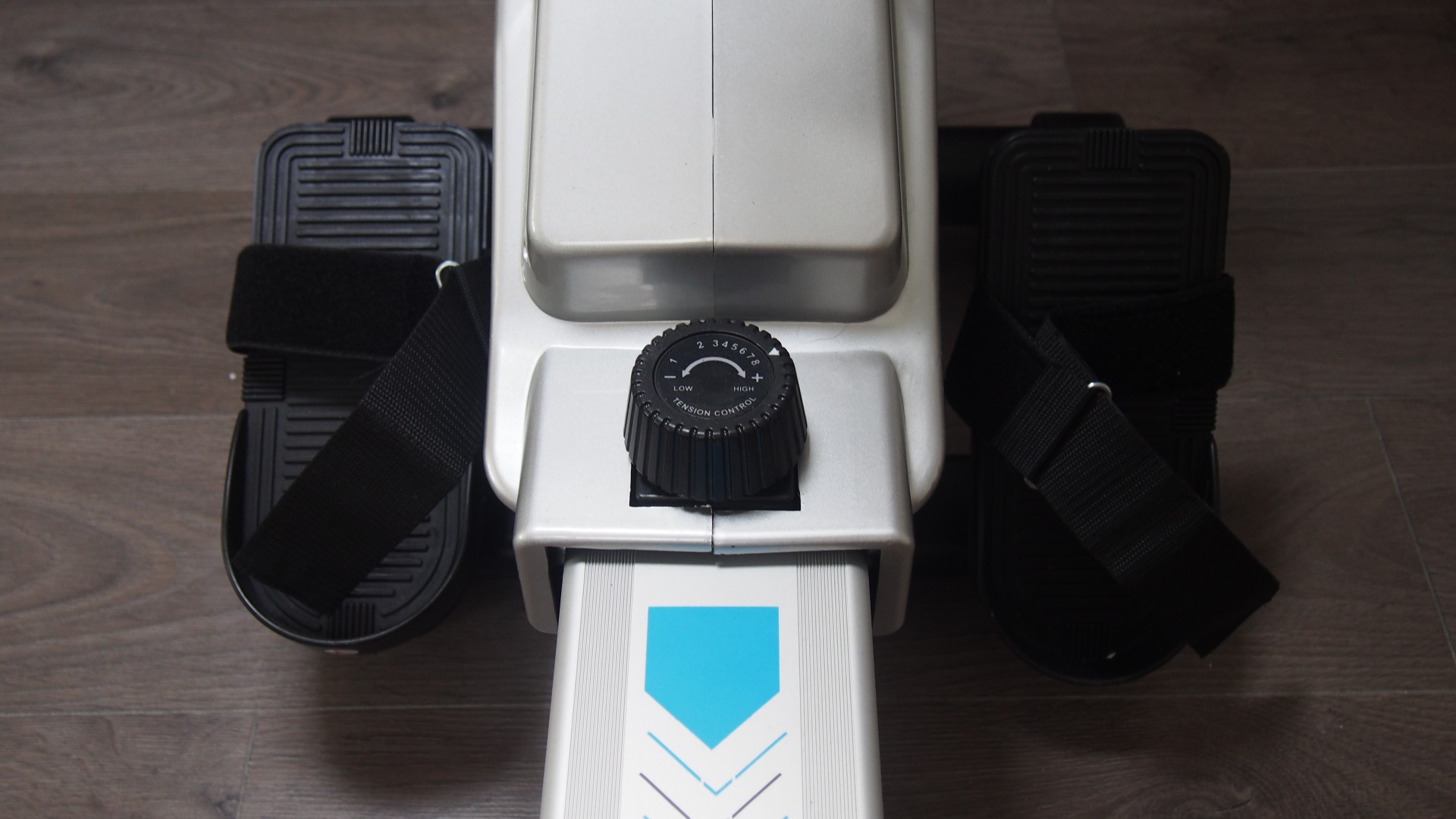
There are other elements in the design that I didn’t particularly love. The padded seat wasn’t super-comfortable and, again, was on the small side, while the tilting, anti-slip foot pedals and the straps that keep your feet in place felt cheap.
Using the connected support will help you get the most out of it, but the rowing experience that underpins that connected support doesn’t feel all that satisfying.
Verdict
The Bluefin Fitness Blade 2.0 is an option if you’re short on space, but the overall rowing experience isn’t the slickest I’ve used. The limited range of resistance levels is unlikely to satisfy those who want a tough workout, and some elements like the foot pedals and handles feel a little cheap.
You do have to keep in mind the price, especially if you can pick it up at a reduced price. However, I’d still say it’s worth spending a bit more to get a much better rowing workout experience.
More Rowing Machine Reviews
- Hydrow review: The Peloton of rowing machines lives up to its billing
- Echelon Smart Rower review: A slick, if expensive, machine for rowing beginners
- ProForm 750R Rowing Machine review: A more affordable way to bring connected rowing workouts home
- JTX Freedom Air Rowing Machine review: Simple and stylish
- DKN H2Oar Water Rower review: A solid water rower that can be stored upright

Mike is an experienced journalist, beginning his career in 2008, and is a keen runner and swimmer. As a contributor to Coach, he covers swimming and reviews rowing machines.
